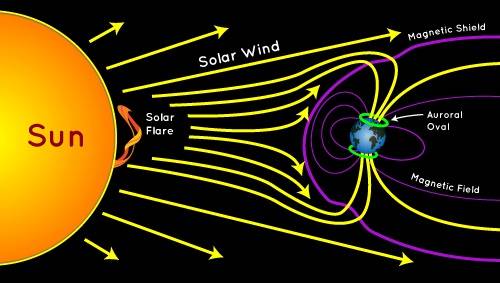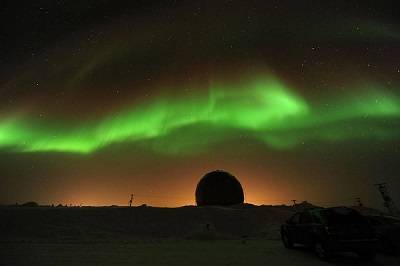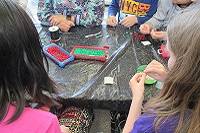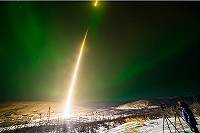Aurora Activities
Explore the aurora with hands-on activities, videos, and other resources!
Image Credits:
Hand-On Activities: UAMN photo.
Videos: Kiuguyat: The Northern Lights.
Links & Resources: UAF photo by Zayn Roohi, 2017.
What is the Aurora?
A planet needs three things to have an aurora: the solar wind, a magnetic field, and an atmosphere.
The sun emits a constant stream of particles, called the solar wind. Some of these particles get caught in Earth’s magnetic field and move toward the poles. When the particles enter the atmosphere, they crash into gases. This excites the gases, and they give off light like a neon sign. This creates colorful aurora lights!
Different gases in Earth’s atmosphere create different colors of the northern lights. Red light is caused by oxygen high in the atmosphere, green by oxygen in the middle of the atmosphere, and purple by nitrogen lower in the atmosphere.
Because of the shape of the Earth’s magnetic field, the aurora forms in ovals over the magnetic North and South Poles. In the Northern Hemisphere, it is called the aurora borealis, or the northern lights; in the Southern Hemisphere, it is called the aurora australis, or the southern lights.
The aurora can also form on other planets in our Solar System. Earth, Jupiter, Saturn, Uranus, and Neptune all have interaction with the solar wind, a magnetic field, and an atmosphere, so they all experience aurora lights.
Download this information as a PDF.


Images: NASA Space Place, NASA/James Spann.
Return to Space Science Activities homepage.

This project was funded under NASA cooperative agreement NNX16AL65A and cooperative agreement number NNH15ZDA004C. Any opinions, findings, and conclusions or recommendations expressed in this material are those of the author(s) and do not necessarily reflect the views of the National Aeronautics and Space Administration.



